I have found several large masses of Honey Mushrooms on dead and living trees, sometimes on the same trees as Hen of the Woods mushrooms.
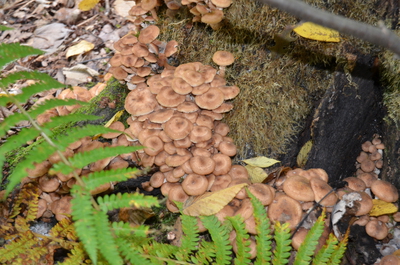
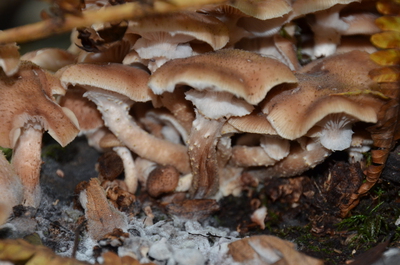
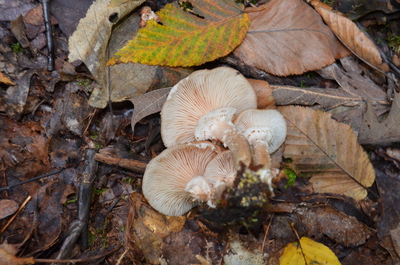
First Attempt - 9/26/2011
I brought a few small mushrooms home. I took a spore print, which showed up white. This helped to differentiate this mushroom from some of it's poisonous lookalikes. I removed the inedible stems, brushed them off under running water, and carefully cooked it for a full 15 minutes, following the advice given on various web sites. The Honey Mushroom tasted delicious, although I only cooked a few small caps and by the time they cooked down for 15 minutes there was not a lot there to get a really good idea of the mushroom's flavor. So far it was a successful test run, so I would feel better about eating more of it next time around. Next time I should try picking some of the young, unopened buttons instead of the full-grown mushrooms.
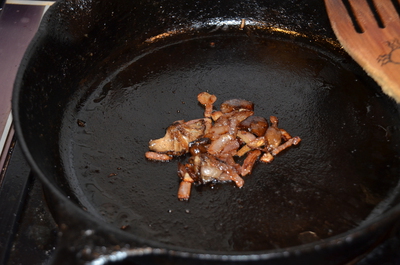
By 3 days later (9/28), the mushrooms that I had left on the stump in the woods had disintegrated into an unpleasant mushy mess.
2nd Attempt - 10/6/2011
I found more of these mushrooms, so I decided to try cooking up a few more of them this time. I was very careful to make sure that these were not any of the similar looking poisonous mushrooms. I selected mostly the smaller button mushrooms, although I really don't think that the slightly larger open mushrooms are bad at all. I sauteed them for over 15 minutes with onions, peppers, and garlic, and finished them off with some ginger, sesame oil, and cooking wine. They tasted very good, like something you might expect to eat at a nice Chinese restaurant. They would have been better if I had browned them a little more by cooking them at a higher temperature, like I did the first time around.
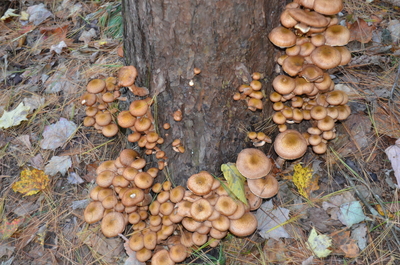
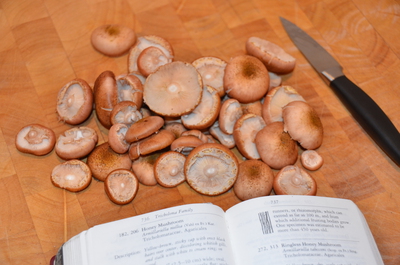
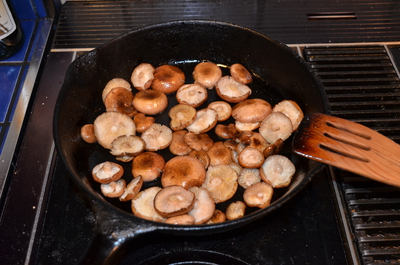
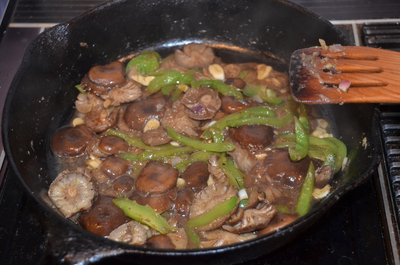
The next morning I felt dehydrated and almost a bit hungover. I have since read that these mushrooms can cause some problems, particularly when they are growing on certain conifers like these ones were. Between all the warnings and caveats with these mushrooms, these mushrooms are a bit sketchy. Perhaps I would try them again in small quantities if they are not growing on conifers but it might be worth sticking to better mushrooms like the Hen of the Woods. Perhaps finding Honey Mushrooms growing on the same tree as Hen of the Woods is a good indicator of Honey Mushroom quality.
Additional Images
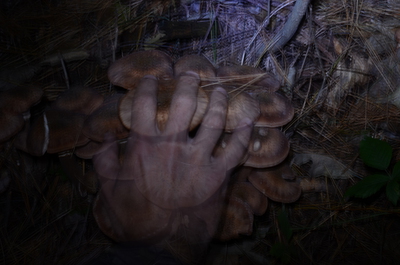
Tidbits
* These mushrooms have some deadly lookalikes, so be very careful or avoid them to be safe.
* Cook them for 15 minutes to minimize the chances of an upset stomach.
* Boiling them for a bit is another way avoid problems with the mushrooms.
* Always take a spore print of these mushrooms. The spore print should be white, not brown.
* Deadly Gallerina mushrooms could grow alongside these, so pick carefully.
* The gill color should be whitish.
* In large groups of mushrooms, look for white spore prints on overlapping mushrooms.
* Avoid those growing on softwoods such as Pine, Hemlock, and Spruce.
* Never eat those growing on Eucalyptus or Locust.
* Avoid older mushrooms, or picking mushrooms after a frost.
Related Links
* How to Prepare Honey Mushrooms
* In-depth info about the Honey Mushroom
* Lots of good information about the edibility of these mushrooms
* Clifton Park Mushrooms
